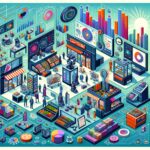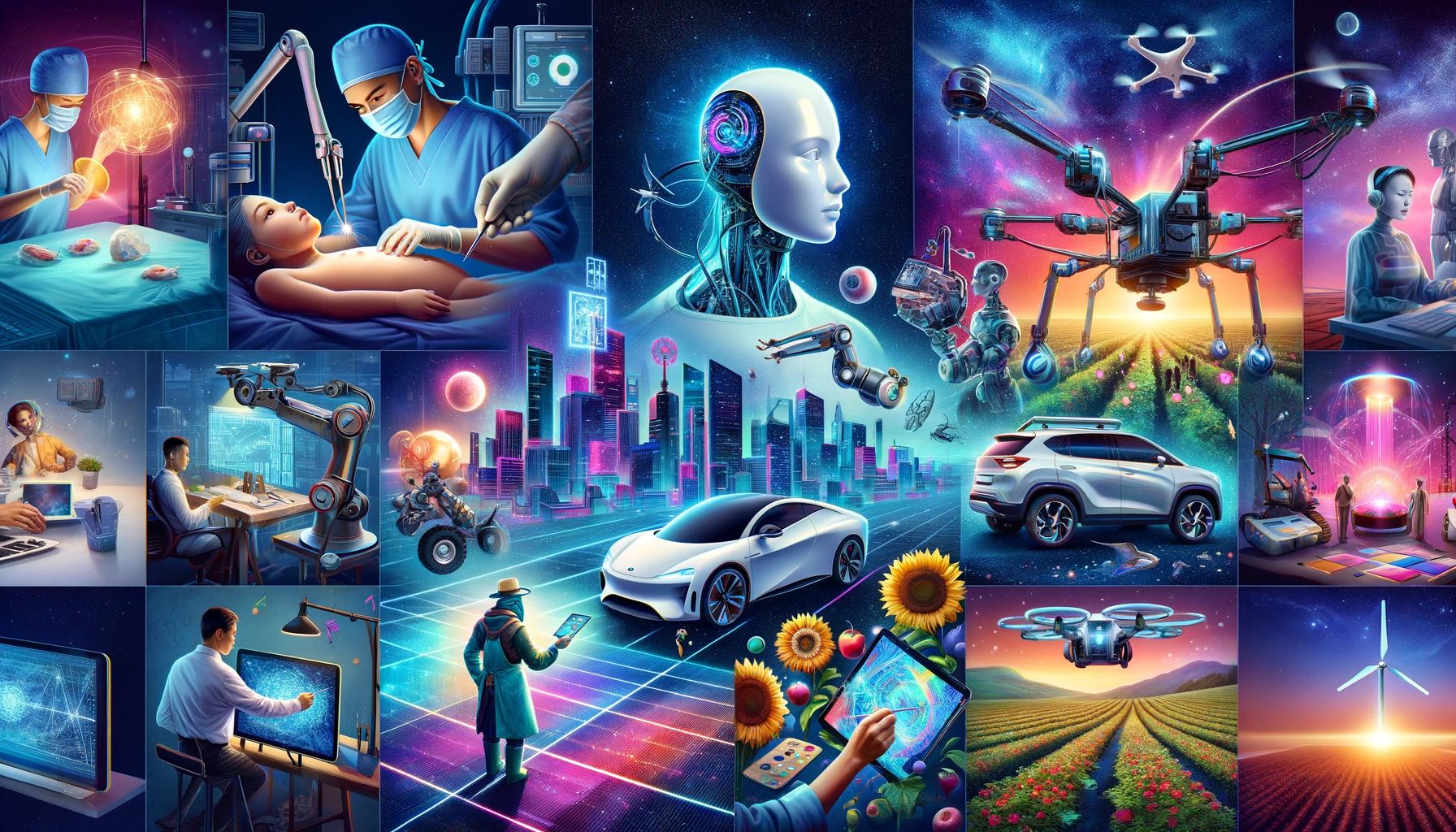The Future of Online Visual Merchandising: Cutting-Edge Insights, Underexplored Opportunities, and Breakthrough Discoveries
As eCommerce competition reaches unprecedented levels, the brands that win are those who don’t just follow trends—they create them.
Online visual merchandising has transformed from a simple product placement strategy into a complex fusion of psychology, data science, and immersive design.
What was once about making items look good is now about creating frictionless, emotion-driven visual experiences that lead directly to sales.
In this article, we unveil cutting-edge insights, explore underutilized opportunities, and spotlight breakthrough discoveries that are reshaping the online merchandising landscape.
Whether you’re optimizing a Shopify boutique or managing a vast product catalog, these strategies can ignite new growth in unexpected ways.
Cutting-Edge Insight: Visual Context Triggers Higher Conversions
Traditional product photos serve one purpose: show the item.
But modern visual merchandising goes beyond that by embedding visual context—lifestyle usage, emotional ambiance, or scenario-based placement.
Instead of just showing a couch on a white background, top-performing sites now depict it in a styled living room, bathed in natural light, with complementary décor and even family members using it.
This type of contextual presentation helps:
-
Build an emotional connection
-
Demonstrate real-life scale and use
-
Reduce buyer hesitation
According to recent eye-tracking studies, contextual images lead to longer on-page engagement and significantly higher conversion rates compared to isolated product shots.
Underexplored Opportunity: Merchandising with User-Generated Visuals
Most eCommerce stores rely solely on professionally produced imagery.
But there’s a treasure trove of untapped value in user-generated content (UGC)—photos and videos of real customers using your product in everyday life.
Why it works:
-
It builds trust and social proof
-
It showcases products in diverse environments and use-cases
-
It boosts authenticity and relatability
Advanced brands are now integrating UGC directly into product galleries, homepage sliders, and even category pages.
Some even use AI to curate the highest-performing customer visuals based on engagement metrics.
Pro tip: Encourage UGC by offering discounts, giveaways, or loyalty points in exchange for photo submissions tagged with your brand on social media.
Breakthrough Discovery: The Role of Micro-Movements in Visual Engagement
Static visuals, no matter how beautiful, eventually plateau in impact.
Enter micro-movements—subtle animations that respond to user interaction and increase visual interest without overwhelming the screen.
Examples include:
-
Buttons that slightly swell on hover
-
Product images that tilt as users scroll
-
Subtle lighting changes or shadows that shift
These micro-interactions activate the user’s peripheral attention, keeping them visually engaged and subtly guiding their behavior.
Studies show that sites with well-executed micro-movements experience higher dwell times and lower bounce rates—especially on mobile.
This emerging tactic bridges the gap between motion design and UX merchandising.
Cutting-Edge Insight: Personalization Isn’t Just for Text—It’s for Visuals
Text-based personalization—like using a customer’s name or referencing their previous purchases—is already standard.
But the cutting edge lies in visual personalization.
That means adapting:
-
Hero banners
-
Product carousels
-
Background colors
-
Visual themes
…based on who’s visiting.
For example, a first-time visitor might see a minimalist, brand-introduction layout, while a returning customer gets bold CTAs and personalized recommendations, all visually tuned to their preferences.
AI-powered merchandising tools now use behavioral data to deliver this level of visual fluidity at scale, creating uniquely resonant experiences for every shopper.
Underexplored Opportunity: Merchandising Through Micro-Categories
Many online stores still group products into broad, generic categories—”Shoes”, “Electronics”, “Skincare”.
But savvy brands are now experimenting with micro-categories—highly specific, interest-driven collections that spark curiosity and deepen browsing.
Examples:
-
“Weekend-Ready Flats”
-
“Gifts for Plant Parents”
-
“Pet-Safe Cleaning Essentials”
Merchandising micro-categories with unique visuals, themes, and messaging allows for deeper storytelling and stronger targeting.
It also aligns perfectly with SEO and social sharing trends, giving you more surfaces for organic traffic.
Breakthrough Discovery: Image SEO as a Merchandising Tool
Visual merchandising isn’t just about aesthetics—it also impacts discoverability. Few merchants realize that image SEO is a hidden superpower.
Here’s how to leverage it:
-
Optimize alt text for keywords and shopper intent
-
Use structured data to mark up product images
-
Create visually themed image sitemaps to improve crawlability
More than 20% of all web searches are image-based, and platforms like Google Shopping rely heavily on image metadata.
By treating every product photo like an SEO asset, you’re doubling down on visibility without creating new content.
This breakthrough links two traditionally separate domains—visual design and search marketing—into one high-performing synergy.
Cutting-Edge Insight: Adaptive Visual Merchandising Based on Device Type
Consumers now shop across a mix of devices—smartphones, tablets, laptops, even smart TVs.
Yet many stores deliver the same visual experience across all screen sizes.
Top-tier brands are now embracing adaptive merchandising—customizing not just layout, but also imagery, on a per-device basis.
For example:
-
On mobile, emphasize vertical images, touch-friendly filters, and simplified visuals
-
On desktop, showcase larger collections, hover effects, and video banners
-
On tablets, use swipe-based galleries and finger-scroll product trails
By tailoring visuals for each device, you remove friction and maximize the user experience at every touchpoint.
Underexplored Opportunity: Visual A/B Testing Beyond Hero Images
A/B testing is a staple in digital marketing, but it’s often limited to headlines, CTAs, and hero images. Meanwhile, a wealth of visual elements go untested.
What you should be A/B testing:
-
Product image types (studio vs. lifestyle)
-
Grid density (3-column vs. 4-column layouts)
-
Thumbnail sizes and orientations
-
Visual badges (sale tags, icons, limited stock indicators)
Even subtle tweaks—like changing a model’s pose or background color—can significantly influence behavior.
The most successful merchandisers treat every visual element as a hypothesis to be tested, not a fixed decision.
Breakthrough Discovery: AR and 3D Are Finally Going Mainstream
For years, AR (augmented reality) and 3D product views were considered novelties.
Today, they’re breaking into the mainstream as core components of visual merchandising.
Retailers across verticals are implementing:
-
“Try it in your room” tools for furniture and home décor
-
360° spin views of tech gadgets and shoes
-
AR-powered try-ons for glasses, jewelry, and cosmetics
These tools reduce returns, increase engagement, and drive more confident purchases. Best of all, they’re now accessible thanks to lower costs and plug-and-play integrations from platforms like Shopify and BigCommerce.
AR isn’t the future—it’s the present, and it’s a game-changer.
Create Visuals That Do More Than Look Good
As we step into the future of online retail, visual merchandising is no longer just a design function—it’s a strategic pillar.
With cutting-edge insights, underexplored opportunities, and breakthrough discoveries emerging daily, now is the time to elevate your approach.
Treat every image as a data point. Consider every visual detail as a lever for influence.
And see your visual strategy not as static art, but as a dynamic, evolving engine for growth.
The brands that harness these tools now will shape the standard tomorrow.

















